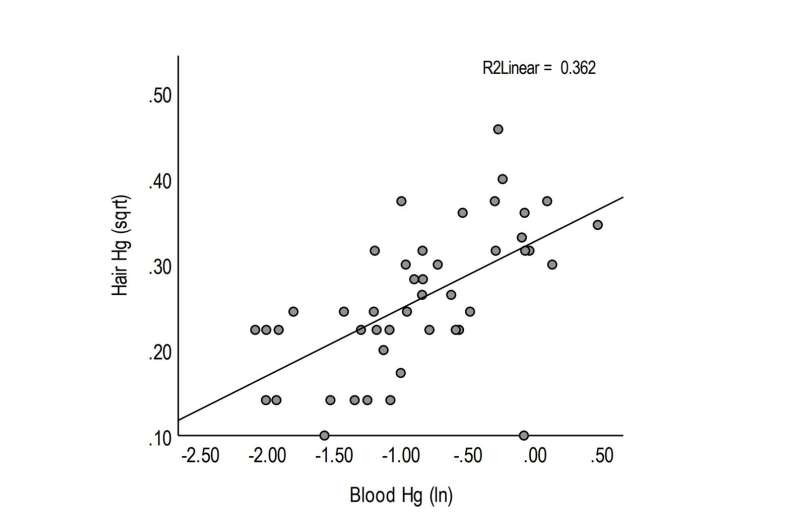This article has been reviewed according to Science X's editorial process and policies. Editors have highlighted the following attributes while ensuring the content's credibility:
fact-checked
trusted source
proofread
Dogs with epilepsy found to have altered levels of trace elements and heavy metals in their blood and fur

A recent study at the University of Helsinki reveals that dogs with epilepsy exhibit distinct alterations in trace elements and heavy metal levels in their blood and fur compared with healthy counterparts.
This finding parallels human research findings in suggesting a potential influence of environmental factors on the development of epilepsy in dogs.
Epilepsy, the most common neurological disease in dogs, has a complex background that is believed to involve both genetic and environmental factors. Research in humans shows that trace elements and heavy metals play a role in epilepsy.
In her doctoral thesis, veterinarian Sarah Rosendahl investigated the concentration of trace elements and heavy metals in blood and fur both from dogs with epilepsy and from healthy dogs. An in-depth questionnaire was used to obtain information about other factors that could influence the results. 123 dogs of a variety of breeds were examined in the study.
"I wanted to include fur analysis because it can show long-term levels of trace elements and heavy metals. Blood shows such levels only at the time when the sample is taken," says Rosendahl.
The results showed that dogs diagnosed with idiopathic epilepsy, the most common form of canine epilepsy in dogs had significantly higher levels of selenium and copper and lower levels of chromium in the blood or fur compared to healthy dogs. Selenium and copper are important trace elements that dogs need, but at excessive levels, they can also have harmful effects on the body. Chromium is a trace element with importance for blood sugar balance.
"We need more research to understand the role of these trace elements in the onset and development of epilepsy. We also do not know whether the altered levels of trace elements are caused by too high or too low an intake of these elements in the diet or whether it is due to other factors. Therefore, based on these results, we cannot make any recommendations to reduce or increase the intake of specific trace elements in the dog's diet," says Rosendahl.
The research also showed that dogs treated with the epilepsy medication potassium bromide had significantly higher levels of arsenic in their blood and fur, indicating that the medication affects the body's excretion of arsenic. According to Rosendahl, further research is needed to find out if this has any negative effects on the dogs' health.
Since canine epilepsy is similar to human epilepsy, the results of the research can also benefit human epilepsy research.
More information: Dissertation: helda.helsinki.fi/items/6ec5eb … c7-99ec-075f6fb9a985
Provided by University of Helsinki





















